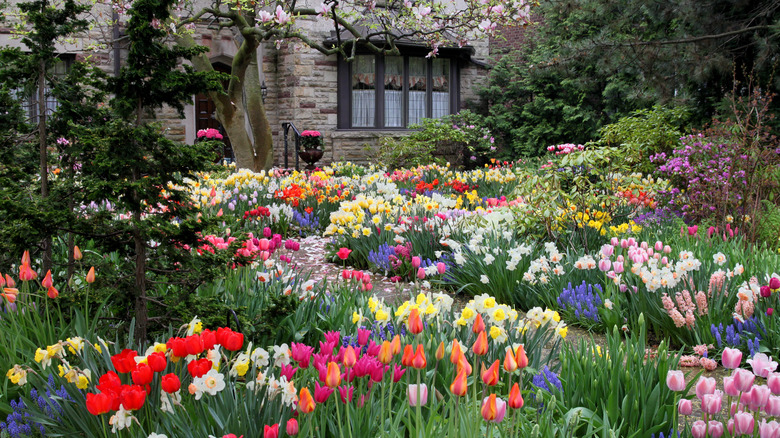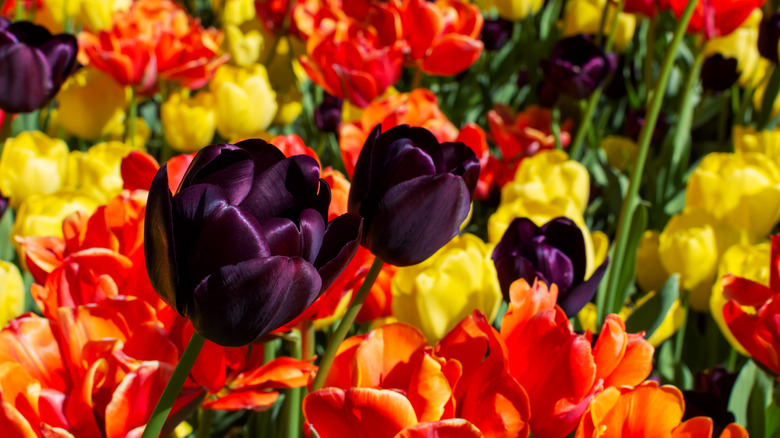Plant This Unusually Colored Tulip To Add Interest To Your Garden
Part of what makes growing flowers so enjoyable is that there are countless options available and many colorful and interesting varieties to choose from. While many gardeners stick to familiar colors such as red, pink, and yellow, there are also some more unique hues out there. If you're interested in venturing into new territory and bringing a striking look to your garden, consider a darker-colored flower: the Queen of Night tulip.
This tulip can be a great addition to a flower garden and will stand out from the crowd with its striking, dark purple hue. The petals look nearly black when in a shady area or when the sun is down, so they'll definitely stand out from your more commonly-colored blooms. Although there are many ideas for creating a stunning flower garden, adding this tulip is one of the best. The Queen of Night looks great on its own but can also be used to add a high level of contrast in a garden. It can help create an amazing look when placed alongside white flowers or vibrant yellows and reds.
Successfully growing Queen of Night tulips
Like other tulips, the Queen of Night is easy to grow and doesn't require a lot to stay healthy. It's an ideal perennial flower to grow in USDA plant hardiness zones 3 through 8. However, though they're relatively low maintenance, there's a lot you need to know before planting Queen of Night tulips. First of all, you'll need to ensure the flower gets full or partial sunlight. It's a great container flower and can be grown indoors with bright, direct sunlight. This tulip also doesn't require much water to grow well, although it will need a moderate amount — it should be watered every 7 to 10 days and will require a bit more water in dry parts of the year. The bulb needs to be planted in well-drained, alkaline soil with a pH of 6.0 to 7.0. You'll plant the bulb in the fall and see blooms emerge in the spring.
However, when growing this flower, take some precautions. Like other tulips, the Queen of Night is toxic to dogs and cats. Put effort into finding the best spot in your garden to plant tulips to keep your pets away from them at all times. If ingested in small amounts, tulips can cause vomiting and diarrhea in pets. Large amounts can be even more problematic and may cause abdominal pain, tremors, tachycardia, coma, or even sudden death.

